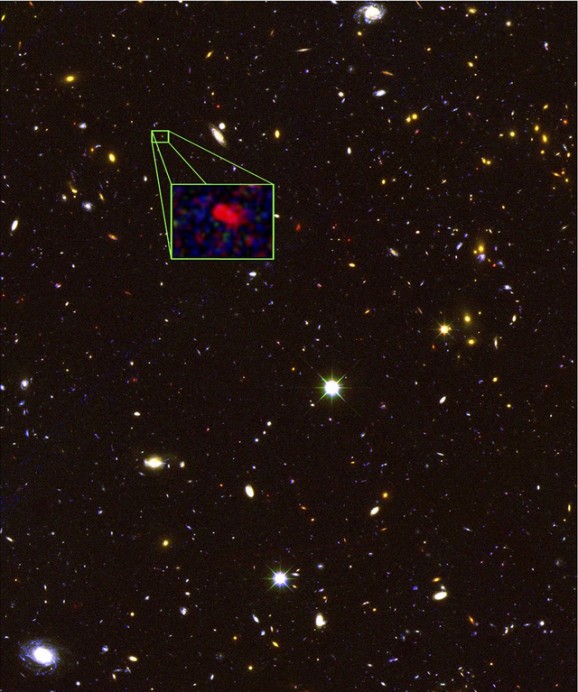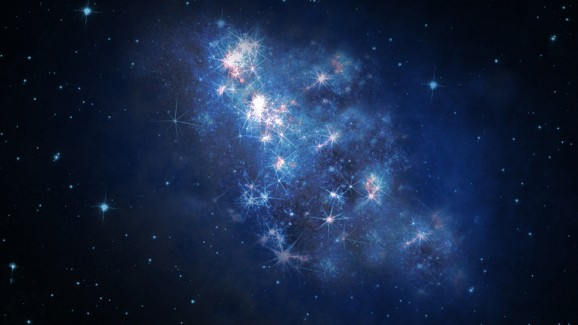Meet The Oldest And Most Distant Galaxy Ever Discovered
This article is more than 2 years old
 The Hubble Space Telescope is a gift that keeps on giving. The number of cosmic discoveries scientists have made with the help of the Hubble keeps growing, and each addition more awesome than the last. Recently, astronomers at the Keck observatory in Hawaii confirmed the Hubble’s discovery of the oldest and most distant galaxy known to man. So far, anyway.
The Hubble Space Telescope is a gift that keeps on giving. The number of cosmic discoveries scientists have made with the help of the Hubble keeps growing, and each addition more awesome than the last. Recently, astronomers at the Keck observatory in Hawaii confirmed the Hubble’s discovery of the oldest and most distant galaxy known to man. So far, anyway.
The z8_GND_5296 galaxy—which I’ll refer to as the Gandalf galaxy, since it clearly needs a catchier name—has a mass of about one billion suns, less than two percent of that of the Milky Way, but it seems to be popping out stars like it’s received the best fertility treatments ever. Gandalf produces about 330 solar masses each year, which is approximately 100 times more than the Milky Way. Scientists believe this production may be related to the Gandalf’s high gas content, or that it might be hoovering the excess gas that exists in the interstitial spaces between galaxies.
This discovery is particularly interesting given the old age of the galaxy. Early galaxies tend to be small, which generally limits their star production. Scientists have never seen one this old create stars in such rapid succession, but this means that the early Universe may have had star-formation capabilities that we didn’t anticipate. Gandalf started giving birth to new stars about 700 million years after the Big Bang.

It’s hard to pinpoint the galaxy’s exact age because it’s taken over 13 billion years for its light to reach us, yet it’s 30 billion light-years away. How is that possible? Well, because the universe is expanding, which means that Gandalf is moving ever farther away from Earth every day. This means that what we’re seeing is what this galaxy looked like 13 billion years ago, which according to Steven Finklenstein, lead author of the study, is “about 95% of the way back to the Big Bang.” Gandalf is 40 million years older than the oldest galaxy scientists had previously identified, and it’s the most distant galaxy we’ve ever seen. The size of the currently observable universe is estimated to just over 45 billion light years, which means that at 30 billion light years away, Gandalf is pretty damn far out there.
Scientists believe that this discovery will help facilitate future discoveries of distant and ancient galaxies. I write about these findings and rattle off numbers like 30 billion light-years away and 13 billion years ago, and after a while I stop thinking about what those numbers actually mean. But damn. Consider that for a moment. Earth is approximately 4.5 billion years old—a baby, relatively speaking. Gandalf has been around for longer than we can really wrap our brains around. The fact that we can see it, and that scientists can actually calculate age, distance, and the number of stars this galaxy spits out, is incredible. I wish Carl Sagan were here to see this. I wonder what amazing discovery will come next. Whatever it is, I’m pretty sure it won’t disappoint.












